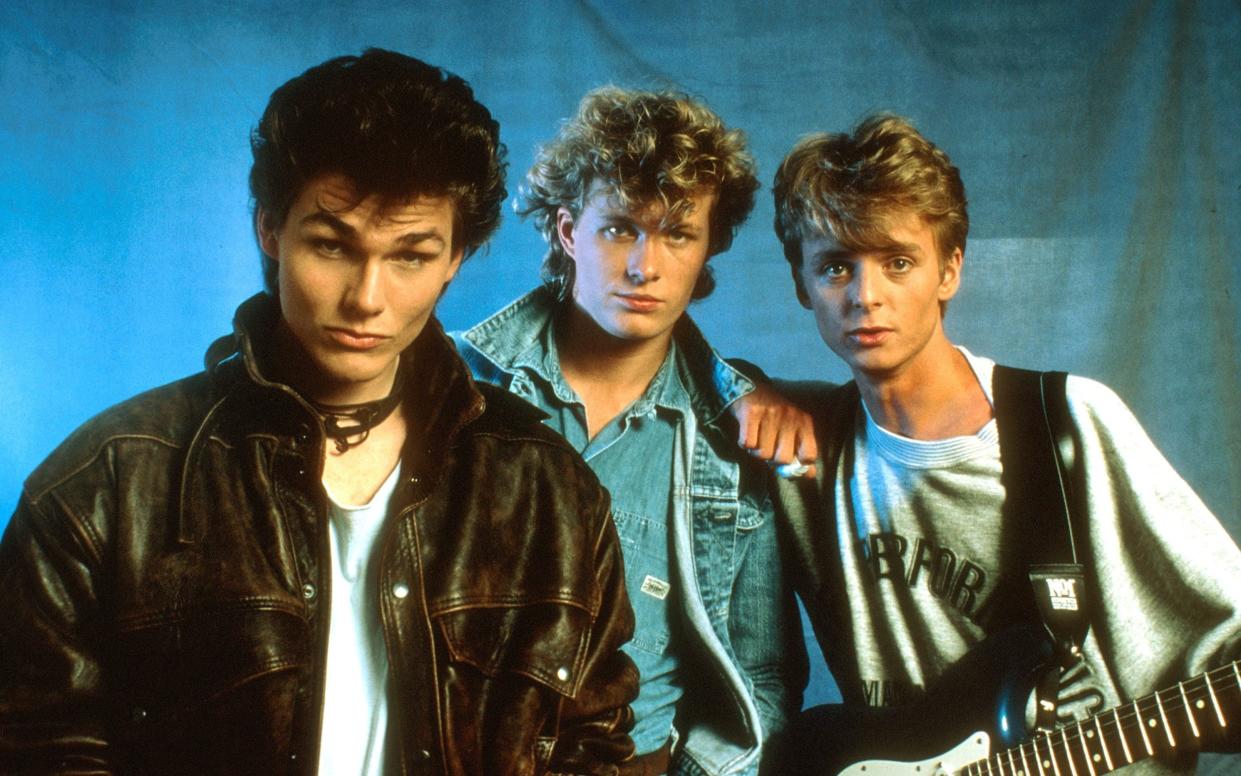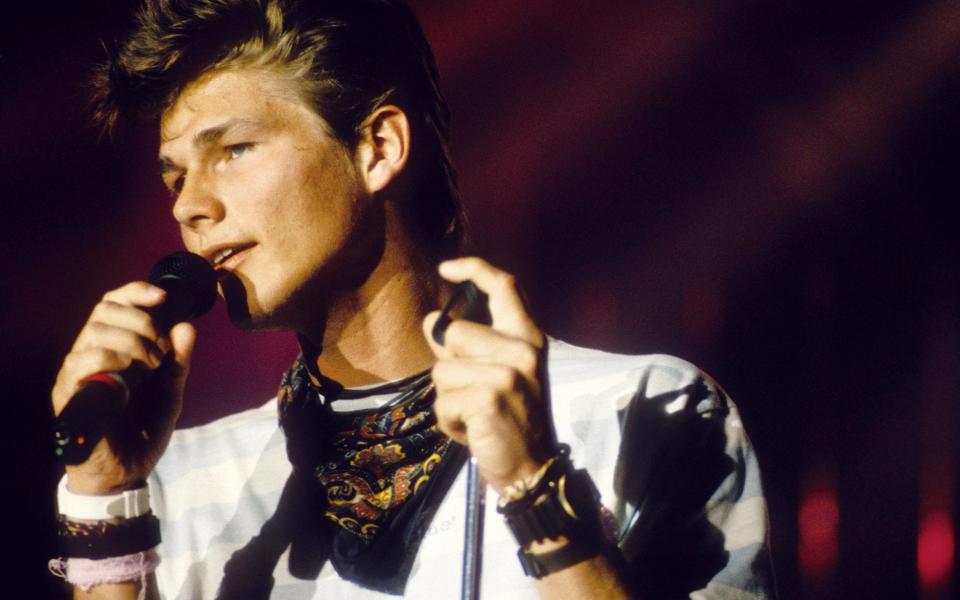A-ha on their wild pop lives: ‘Books and bickering – those were our excesses’

“Patience,” says A-ha frontman Morten Harket. “That’s what I’ve learnt from nearly 40 years in the music industry. It takes patience to wait for the songs to come, to wait in studios, in airports, backstage…” He waited, too, for the critics to see beyond his chiselled cheekbones and Viking physique to appreciate the hard graft and passion that the Norwegian New Wave trio put into the 1980s hits Take On Me, The Sun Always Shines on TV and Hunting High and Low.
“Decades after we were dismissed as a cartoon band, our songs are still played on the radio,” says keyboardist Magne Furuholmen, “and they’ve been streamed over a billion times online. It took time, but we finally made it off the poster walls and into people’s hearts and minds. That’s where we’ve always wanted to be.”
But A-ha have walked a rocky road to take their place in the pop pantheon. Today they will only be interviewed separately about their beautiful new album, True North, because, as Furuholmen explains: “We have found a wonderful way of continuing our collaboration – by not being in the same room!”
I don’t get to share a room with any of them as they felt a promo trip to the UK “felt unmusical” at a time of national mourning. Instead I get Harket and Furuholmen on the phone from their homes in Norway. (Paul, who lives in New York, is unavailable.) Furuholmen remembers meeting the late Queen at a Royal Variety Show in the late 1980s: “She talked about her Norwegian relations [King Harald is her second cousin] and she was very sweet, very gracious”.
The engaged and funny Furuholmen, 59, is by far the easiest to talk to. Harket, 63, is more evasive and more downbeat. He’s relentlessly self-critical and briskly dismisses his marvellous 2018 turn on The Masked Singer as “shite”. Back in his pomp he took some stick from Smash Hits for his sixth form philosophising (the magazine dubbed him Morten Snorten Forten Horten) and he’s still at it.
My own teenage fantasies of long phone calls from Harket didn’t include him grilling me on the origin of the physical universe. “Nothing comes from nothing,” he says. “So does nothing come from an idea? And is that also the case with the universe? Is it an idea that is the underlying source or force?" It’s hard to tell if he’s serious or amusing himself. He has a quick, dry wit and tells me he finds little point in trying to tell people who he really is: “because they’ve already decided that”.
The 2021 documentary A-ha: The Movie exposed the decades of “grinding teeth and dirty looks” that define their difficult dynamic. It showed the band’s main songwriter and guitarist, Waaktaar-Savoy, dismissing some of Furuholmen’s contributions to their music (including the synth riff of Take On Me) as “table dressing”. Furuholmen blamed Waaktaar-Savoy’s domineering behaviour for his anxiety and heart condition. Meanwhile, Harket struggled to process the screaming adulation of fans wilting against the doors of his limousine. “F___ fame,” he sighed.
Waaktaar and Furuholmen met as kids in suburban Oslo. Inspired by Jimi Hendrix, Queen and Uriah Heep, they formed rock band Bridges (in which they played an embryonic version of Take On Me, then called The Juicy Fruit Song because of its jingly nature). Although both played guitar, Waaktaar-Savoy shunted Furuholmen onto keyboards (“I felt bent to his will”). They wrote melancholy songs in minor keys and recruited Harket later, awed by a voice capable of soaring and swooping through three octaves. “Paul and I bring the vulnerability,” Furuholmen tells me, “and Morten brings the majesty.”

By a weird coincidence, Harket had witnessed the 1969 plane crash in which Furuholmen’s father died. Harket’s family were together in the car when they spotted the small plane carrying 29 year old trumpeter Kåre Furuholmen (and five other jazz musicians) drop from the sky. As Harket’s father was a doctor, he immediately headed for the crash site to offer assistance, but medics were already on hand.
Harket picked the band’s name from one of Waaktaar’s songs and in 1982 the group moved to London to chase a record deal. It took longer than they’d hoped, and they were reduced to sleeping on polystyrene boards and eating food from bins. But the more extroverted Harket has fond memories of the party scene. “I went through all the [fashion] phases and had fun with paint in my hair. It’s a shame I was never photographed then because some of it was quite striking, in fact. I did a lot based on the ripped jeans look, and I took it further from that point…”
They released an early version of Take on Me in 1984, but the song only became a hit when it was crisped up in 1985 and accessorised with a groundbreaking video in which Harket broke out of a comic (in which he appeared as a pencil sketch animation) to unite with the girl reading the comic. It was a romantic fantasy that sent teenagers swooning at the time and retains such an enduring appeal that in 2017 an app was launched allowing younger fans to recreate the video effects on their phones. “The video bought us time,” says Furuholmen, “it allowed the song to sink in.”

Fame sent many of their pop peers off the rails, but A-ha remained clean cut. Photos of the period show them sitting in their dressing rooms with books, not booze. “We were sensible, middle class Norwegian boys,” says Furuholmen. “So yes, there were a lot of books and there was a lot of bickering. Those were our excesses. But we didn't get into it for the sex, drugs and celebrity. Paul and I have the same life partners now as we did then. It was all about the music for us.”
Although Harket was an international sex symbol his love life also appears to have been fairly steady. He was married to actor and singer Camilla Malmquist from 1989-1998. (He says she didn’t think his voice sounded as good in real life as it did on the radio.) He had another daughter with Anne Undlien and one more with Inez Andersson, with whom he tells me he’s been happily settled for the past 16 years.
Harket is embarrassed by the way he was marketed as a “himbo”, but Furuholmen tells me he has “very little sympathy for people who have success and complain [about their good looks]. I’m not interesting in taking newspaper space from the real victims of the world.”

A-ha proved they were more than a one-hit wonder, following Take On Me with such a string of hits (Cry Wolf, Manhattan Skyline) that continued into their second album, Scoundrel Days (1986). They were invited to write the theme to 1987 Bond film, The Living Daylights, which required a nominal collaboration with composer John Barry. He found A-ha so stubborn (“we smiled and nodded, then went off and did our own thing”) that he later compared them to the Hitler Youth in an interview. The band refused to appear at the film premiere, but the song went to number five in the UK chart.
In the decades that followed the band split and reunited a couple of times. Furuholmen thinks things would have been different if songwriting credits had been split equally. “I always promoted that idea,” he sighs. “I’ve got my share pf the band’s income. So has Paul. Morten got the least. And I firmly believe that the songs Paul and I wrote wouldn’t have enjoyed such success without Morten’s voice.”
He says the one thing the trio all agreed on was that: “We were all equally unhappy with that documentary [A-ha: The Movie]. We all wished the music had been at the centre so that's what we did with True North - we made a film with a live performance at its heart. Music has always been our guiding needle.”

Furuholmen says the songs he contributed to True North “came out of the pandemic. We were in New Zealand when it broke. We were in the middle of a world tour. We had to redirect home instead of heading to Japan.” When it came to finding a theme for songs and the accompanying film, he realised that “the only thing I could find that connects us, outside of music, was nature.”
The band have always been passionate environmentalists, with Furuholmen describing Norway’s profits from oil as “a dark stain on us”.
“In the late 1980s we were promoting electric cars, which we thought would become mainstream by the mid 1990s,” he says. "We supported organisations dealing with solar power in Africa and organisations working for reforestation in the Amazon. Morton always had a keen interest in biology. A passion for biodiversity…”
Harket dates this passion back to his mid teens. ”When I was about 14 I read a novel about an upper class English lady who painted watercolours of orchids. I had never heard of them before. But even the word, orchid, hit quite a deep, resonant chord in me. That was very strange, because I had never seen one. They’re in all the supermarkets now but they were rare in the 1970s. On tour I would always go off scouting for orchids, to avoid people… climbing trees in tropical regions. They are the most highly developed plants. Their needs are very basic, they break down organic material and leave the soil for other plants. I read everything I could find and I still have hundreds of the names still in my head.”
He does, too. When I mention the bee orchid my son spotted in Kent this summer he instantly bounces back the Latin name: “Ophrys apifera! Beautiful! I’ve never seen one in the wild!”
True North was filmed in Bodo, just North of the Arctic Circle, where Furuholmen has just bought a 2,000 acre “regenerative farm”. The blues and greys of the jagged coastline contrast with the golden lighting of the band’s live performance. Accompanied by a small orchestra, the band sound as warm and open as they did on their critically restorative MTV Unplugged recording back in 2016.
The single, I’m In, allows Harket’s voice to float up into a falsetto that – against the odds – retains its choirboy clarity. On You Have What It Takes the band assure the younger generation that they can still save our planet.
“When I look at our children I do feel hopeful,” says Furuholmen. “I see their ability to engage and demand change. I see them actively changing their ways to live more sustainably. Our generation hasn’t done enough. This is… not exactly a letter of apology but an acknowledgment that it’s going to take more. And sadly we are leaving you with the job.”
True North is in cinemas now; details and tickets here. The album is out on October 21

 Yahoo News
Yahoo News 
